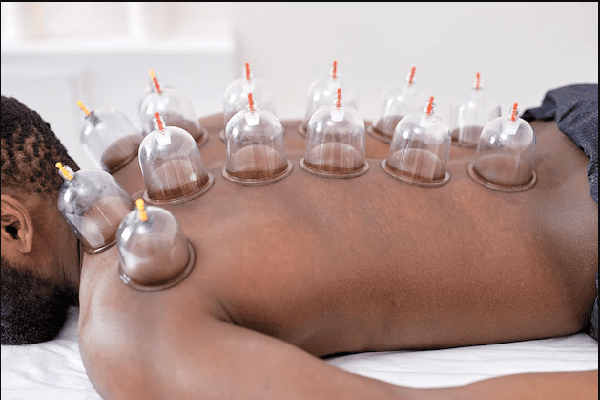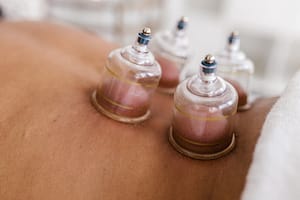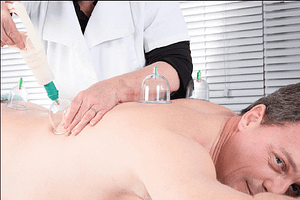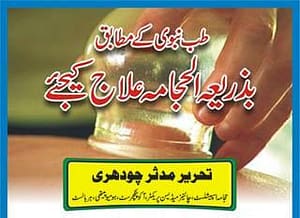Hijama FAQ’s We Do Hijama Under The Guideline Of Modern Research And Sunnah Rules
We use a special needle in that method with no scar on the skin no bleeding after Hijama and no dressing required. We also use disposable cup needle blades and cotton glove sheets in highly sanitized environments in modern clinics.
What is cupping (Hijama)?
Cupping (Hijama) is the best remedy recommended and used by Messenger (Sallallaahu Álayhi Wasallam). The Messenger (Sallallaahu Álayhi Wasallam) said, “Indeed the best of remedies you have is cupping (Hijama)…” [Saheeh al-Bukhaaree (5371)]. He (Sallallaahu Álayhi Wasallam) also said that on the night of Israa (his ascension to the heavens) he (Sallallaahu Álayhi Wasallam) did not pass by an angel except that it said to him, “Oh Muhammad, order your Ummah (nation) with cupping (Hijama).” [Saheeh Sunan Tirmidhee (3479)]. This shows the importance and greatness of this Sunnah.
‘Hijama’ in Arabic is derived from ‘hajm’ which means ‘sucking’. Cupping (Hijama) is the process of applying cups to various points on the body by removing the air inside the cups to form a vacuum
History of Cupping.
Cupping therapy is an incredibly ancient and universal practice that spans both East and West. In the primitive shamanistic practices of all the world’s indigenous peoples, there were certain shamans who specialized in the sucking out of illness and infirmity from the body.
In the East, the Chinese have been practicing the art of cupping for at least three thousand years. Along with Tui Na massage, acupuncture and moxibustion, cupping forms part of the traditional bodywork or physiotherapy system of TCM, or Traditional Chinese Medicine. Cupping is applied to the acupuncture points to relieve the stagnation of Qi and blood, both locally and in the organ(s) activated by the point.
In the West, cupping therapy had its birth in Egypt. The Ebers Papyrus, written around 1550 B.C.E., states that bleeding by wet cupping removes foreign matter from the body. In cupping, the ancient Egyptians saw the remedy for just about every disorder.
The ancient Egyptians passed the art of cupping on to the ancient Greeks. Both Hippocrates and Galen were staunch advocates and users of cupping therapy. Galen once condemned Erasistratus, a noted physician in Alexandria, for not using cupping. Herodotus, a famous Greek historian, and physician wrote, in 413 B.C.:
From the ancient Greeks and Romans, through the Alexandrians and Byzantines, cupping therapy was passed on to the Muslim Arabs and Persians. The Prophet Mohammed even sanctioned the use of cupping. Cupping is now an important and popular therapeutic modality of Unani Medicine.
In the West, cupping remained an important part of medicine and therapy, conventional, alternative, and folk-based, until the early 20th century. The surgeon Charles Kennedy wrote, in 1826:
“The art of cupping has been so well-known, and the benefits arising from it so long experienced, that it is quite unnecessary to bring forward testimonials in favor of what has received not only the approbation of modern times but also the sanction of remotest antiquity.”
After falling out of favor with medicine in the modern era, cupping therapy is enjoying a resurgence in popularity, promoted by acupuncturists and other holistic healthcare practitioners. New and exciting variations on this ancient technique, like cupping massage, are also being developed.
One secret of cupping’s perennial popularity is its great ability to promote a state of deep pleasure and profound relaxation. Hopefully, cupping is here to stay.
Hijama FAQ’s
Types of Hijama:
- Dry cupping (Hijama) – This is the process of using a vacuum on different areas of the body in order to gather the blood in that area without incisions (small, light scratches using a razor).
- Massage cupping (Hijama) – This is similar to dry cupping (Hijama) but olive oil is applied to the skin (before applying the cups) in order to allow easy movement of the cups.
70% of diseases, pains, and ailments are due to the blood being unable to reach certain parts of the body. Dry cupping (Hijama) and dry massaging cupping (Hijama) allow the blood to reach these places.
Dry and massage cupping (Hijama) may be self-administered in the comfort and privacy of your own home. Each cupping (Hijama) box is accompanied by an instruction booklet. We have also provided further instructions on our website www.chaudhryclinic.ca’ How to Cup’.
Dry and massage cupping (Hijama) may be administered any time of the day, any day of the week, or any month. There are no restrictions.
- Wet cupping (Hijama) – This is the process of using a vacuum at different points on the body but with incisions in order to remove ‘harmful’ blood which lies just beneath the surface of the skin. (It is recommended that wet cupping (Hijama) is only administered by a cupping therapist).
- Wet cupping (Hijama) may only be administered at certain times of the day and days of the week. Please see our ‘Authentic Narrations’ page for further details.
Is cupping (Hijama) a cure for every disease?
Cupping (Hijama) is a cure for every disease if performed at the correct time. The Messenger (Sallallaahu Álayhi Wasallam) said,
“Indeed in cupping (hijama) there is a cure.” [Saheeh Muslim (5706)]. The Messenger (Sallallaahu Álayhi Wasallam) said,
“Whoever performs cupping (Hijama) on the 17th, 19th, or 21st day (of the Islamic month) then it is a cure for every disease.
“ [Saheeh Sunan Abi Dawud (3861)].
There Are Specific Points on the Body Where the Cups Are Applied For Each Ailment.
hijama wet cupping therapy
hijama therapy





